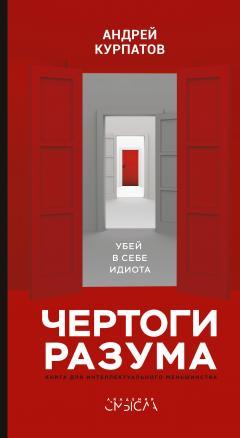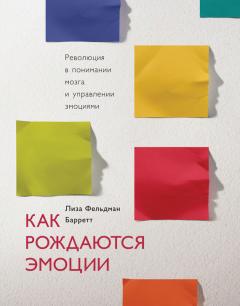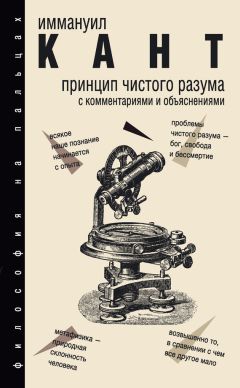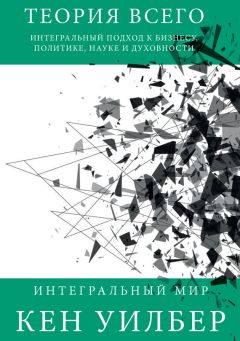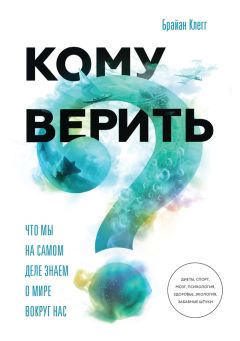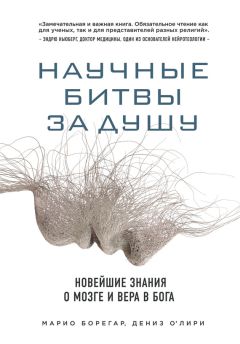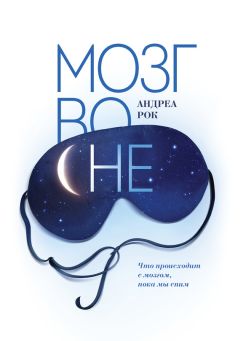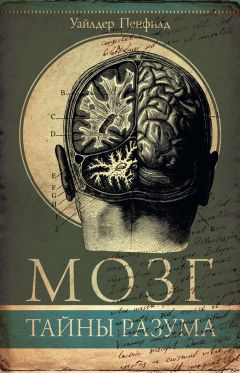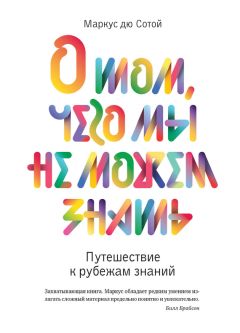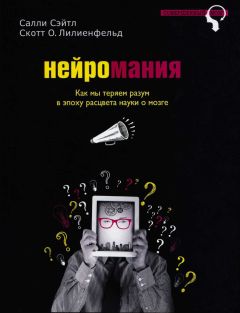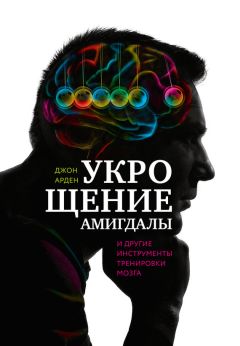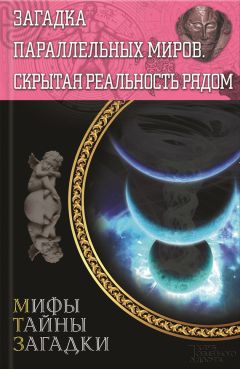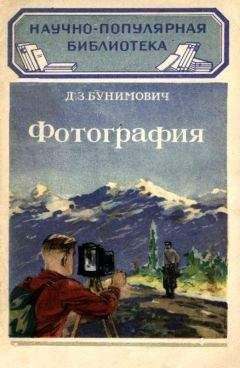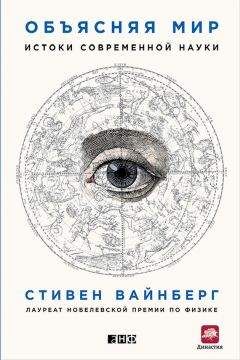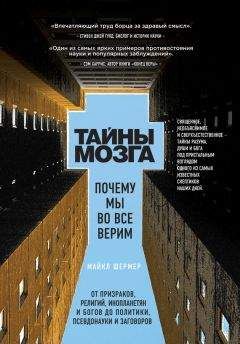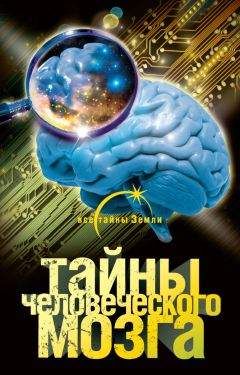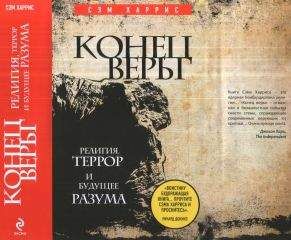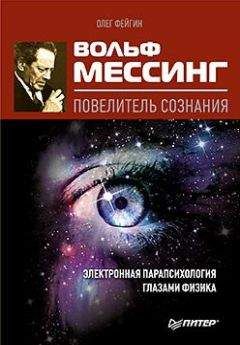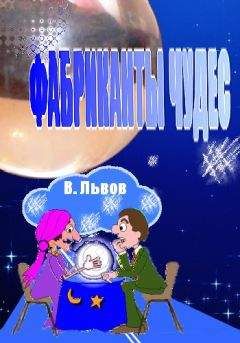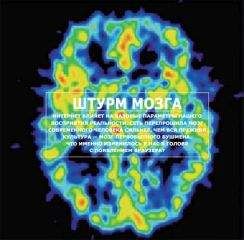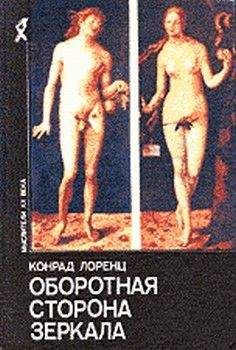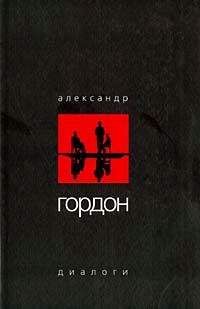Марио Борегар - Войны мозга. Научные споры вокруг разума и сознания
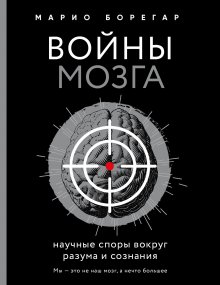
Все авторские права соблюдены. Напишите нам, если Вы не согласны.
Описание книги "Войны мозга. Научные споры вокруг разума и сознания"
Описание и краткое содержание "Войны мозга. Научные споры вокруг разума и сознания" читать бесплатно онлайн.
21
D. J. Chalmers, “Facing Up to the Problem of Consciousness,” Journal of Consciousness Studies 2 (1995): 200–219.
22
Однако научный мир далек от консенсуса по вопросу природы взаимоотношений между разумом и мозгом. Существует множество других теорий, пытающихся объяснить взаимосвязь между разумом и мозгом, – таких как функционализм, биологический натурализм, нейтральный монизм, панпсихизм. В этой главе я не рассматриваю их все, поскольку книга написана главным образом для непосвященных. Читателям, которые хотят больше узнать о других теориях, можно порекомендовать обратиться к таким научным работам, как «Кембриджский справочник сознания» (The Cambridge Handbook of Consciousness) и «Справочник по сознанию» (The Blackwell Companion to Consciousness).
23
Ради знакомства с трудами и взглядами Фредерика Майерса рекомендую прочитать превосходную книгу: E. F. Kelly and E. W. Kelly, eds., Irreducible Mind: Toward a Psychology for the Twenty-First Century (Lanham, MD: Rowman & Littlefield, 2007).
24
В науке не только наблюдения определяют теории, но и теории влияют на полученные в экспериментах результаты наблюдений.
25
Anne Harrington, The Placebo Effect: An Interdisciplinary Exploration (Cambridge, MA: Harvard Univ. Press, 1997), 1.
26
B. Klopfer, “Psychological Variables in Human Cancer,” Journal of Projective Techniques and Person Assessment 21 (1957): 331-34.
27
M. Brooks, “Anomalies: 13 Things That Don’t Make Sense,” New Scientist, March 19–25, 2005.
28
A. Hróbjartsson and P. C. Götzsche, “Is the Placebo Powerless? An Analysis of Clinical Trials Comparing Placebo with No Treatment,” New England Journal of Medicine 344 (2001): 1594–1602.
29
В 2007 году я написал научную статью с обзором нескольких исследований эффекта плацебо, в которой утверждал, что эти исследования наглядно свидетельствовали о нашей способности в значительной степени влиять на наш мозг и тело с помощью одних только наших убеждений. Первая глава представляет собой популяризированную версию этой статьи. M. Beauregard, “Mind Does Really Matter: Evidence from Neuroimaging Studies of Emotional Self-Regulation, Psychotherapy, and Placebo Effect,” Progress in Neurobiology 81 (2007): 218-36.
30
A. K. Shapiro and L. A. Morris, “The Placebo Effect in Medicine and Psychological Therapies,” in Handbook of Psychotherapy and Behavior Change: An Empirical Analysis, 2nd ed., ed. S. L. Garfield and A. Bergin (New York: Wiley, 1978), 369–410.
31
T. J. Kaptchuk, C. E. Kerr, and A. Zanger, “Placebo Controls, Exorcisms, and the Devil,” Lancet 374 (2009): 1234-35.
32
H. K. Beecher, “The Powerful Placebo,” Journal of the American Medical Association 159 (1955): 1602-6.
33
G. S. Kienle and H. Kienle, “The Powerful Placebo Effect: Fact or Fiction?” Journal of Clinical Epidemiology 50 (1997): 1311-18.
34
F. Benedetti, Placebo Effects: Understanding the Mechanisms in Health and Disease (New York: Oxford Univ. Press, 2009).
35
R. Ornstein and D. Sobel, The Healing Brain: Breakthrough Discoveries About How the Brain Keeps Us Healthy (New York: Simon & Schuster, 1987).
36
D. Evans, Placebo: The Belief Effect (London: HarperCollins, 2004).
37
D. E. Moerman, “Cultural Variations in the Placebo Effect: Ulcers, Anxiety and Blood Pressure,” Medical Anthropology Quarterly 14 (2000): 51–72.
38
A. J. de Crean et al., “Effect of Colour of Drugs: Systemic Review of Perceived Effect of Drugs and of Their Effectiveness,” British Medical Journal 313 (1996): 1624-26.
39
I. Hashish et al., “Reduction of Postoperative Pain and Swelling by Ultrasound Treatment: A Placebo Effect,” Pain 33 (1988): 303-11.
40
J. D. Levine, N. C. Gordon, and H. L. Fields, “The Mechanism of Placebo Analgesia,” Lancet 312 (1978): 654-57.
41
J. K. Zubieta et al., “Placebo Effects Mediated by Endogenous Opioid Neurotransmission and i-opioid Receptors,” Journal of Neuroscience 25 (2005), 7754-62.
42
R. de la Fuente-Fernandez et al., “Expectation and Dopamine Release: Mechanism of the Placebo Effect in Parkinson’s Disease,” Science 293 (2001): 1164-66.
43
A. J. de Craen et al., “Placebo Effect in the Treatment of Duodenal Ulcer,” British Journal of Clinical Pharmacology 48 (1999): 853-60.
44
K. Schapira et al., “Study on the Effect of Tablet Colour in the Treatment of Anxiety States,” British Medical Journal 2 (1970): 446-49.
45
I. Kirsch and G. Sapirstein, “Listening to Prozac but Hearing Placebo: A Meta-analysis of Antidepressant Medication,” Prevention & Treatment 1 (1998): 2a. Документ на сайте: http://journals.apa.org/prevention.
46
L. A. Cobb et al., “An Evaluation of Internal-Mammary-Artery Ligation by a Double-Blind Technique,” New England Journal of Medicine 260 (1959): 1115-18.
47
J. B. Moseley Jr. et al., “Arthroscopic Treatment of Osteoarthritis of the Knee: A Perspective, Randomized, Placebo-Controlled Trial: Results of a Pilot Study,” American Journal of Sports Medicine 24 (1996): 28–34.
48
J. B. Moseley et al., “A Controlled Trial of Arthroscopic Surgery for Osteoarthritis of the Knee,” New England Journal of Medicine 347 (2002): 81–88.
49
C. McRae et al., “Effects of Perceived Treatment on Quality of Life and Medical Outcomes in a Double-Blind Placebo Surgery Trial,” Archives of General Psychiatry 61 (2004): 412-20.
50
McRae et al., “Effects of Perceived Treatment on Quality of Life,” 418-19.
51
E. D. Eaker, J. Pinsky, and W. P. Castelli, “Myocardial Infarction and Coronary Death Among Women: Psychosocial Predictors from Twenty-Year Follow-Up of Women in the Framingham Study,” American Journal of Epidemiology 135 (1992): 854-64.
52
W. P. Kennedy, “The Nocebo Reaction,” Medical World 95 (1961): 203-5.
53
R. R. Reeves et al., “Nocebo Effects with Antidepressant Clinical Drug Trial Placebos,” General Hospital Psychiatry 29 (2007): 275-77.
54
Reeves et al., “Nocebo Effects.”
55
A. J. Barsky and J. F. Borus, “Functional Somatic Syndromes,” Annals of Internal Medicine 130 (1999): 910-21.
56
M. G. Myers, J. A. Cairns, and J. Singer, “The Consent Form as a Possible Cause of Side Effects,” Clinical Pharmacology and Therapeutic 42 (1987): 250-53.
57
M. Flaten and T. D. Blumenthal, “Caffeine-Associated Stimuli Elicit Conditioned Response: An Experimental Model of the Placebo Effect,” Psychopharmacology 145 (1999): 105-12.
58
M. Shepherd, “The Placebo: From Specificity to the Non-Specific and Back,” Psychological Medicine 23 (1993): 569-78.
59
R. A. Preston et al., “Placebo-Associated Blood Pressure Response and Adverse Effects in the Treatment of Hypertension,” Archives of Internal Medicine 160 (2000): 1449-54.
60
J. A. Turner et al., “The Importance of Placebo Effects in Pain Treatment and Research,” Journal of the American Medical Association 271 (1994): 1609-14.
61
P. Enck, F. Benedetti, and M. Schedlowski, “New Insights into the Placebo and Nocebo Responses,” Neuron 59 (2008): 195–206.
62
T. Koyama et al., “The Subjective Experience of Pain: Where Expectations Become Reality,” Proceedings of the National Academy of Sciences of the United States of America 102 (2005): 12950-55.
63
H. Benson, “The Nocebo Effect: History and Physiology,” Preventive Medicine 26 (1997): 612-15.
64
C. K. Meador, “Hex Death: Voodoo Magic or Persuasion?” Southern Medical Journal 85 (1992): 244-47.
65
H. Basedow, The Australian Aborigenal (Adelaide, Australia: Preece, 1925). Цитируется по изданию: W. B. Cannon, “Voodoo Death,” American Anthropology 44 (1942): 169-81.
66
Meador, “Hex Death.”
67
H. Pilcher, “The Science of Voodoo: When Mind Attacks Body,” New Scientist, May 13, 2009. http://www.newscientist.com/article/mg20227081.100-the-science-of-voodoo-when-mind-attacks-body.html.
68
Meador, “Hex Death.”
69
S. Silberman, “Placebos Are Getting More Effective. Drugmakers Are Desperate to Know Why,” Wired Magazine, September 17, 2009. http://www.wired.com/medtech/drugs/magazine/1709/ff_placebo_effect?currentPage=all.
70
Silberman, “Placebos Are Getting More Effective.”
71
Silberman, “Placebos Are Getting More Effective.”
72
Silberman, “Placebos Are Getting More Effective.”
73
L. Colloca and F. G. Miller, “How Placebo Responses Are Formed: A Leaning Perspective,” Philosophical Transactions of the Royal Society B: Biological Sciences 366 (2011): 1859-69.
74
J. Robbins, A Symphony in the Brain: The Evolution of the New Brain Wave Biofeedback, rev. ed. (New York: Grove Press, 2008), xv.
75
Robbins, Symphony in the Brain.
76
Robbins, Symphony in the Brain.
77
http://www.aapb.org/.
78
Robbins, Symphony in the Brain.
79
Robbins, Symphony in the Brain.
80
M. B. Sterman, L. R. Macdonald and R. K. Stone, “Biofeedback Training of the Sensorimotor Electroencephalogram Rhythm in Man: Effects on Epilepsy,” Epilepsia 15 (1974): 395–416.
81
M. B. Sterman and L. R. Macdonald, “Effects of Central Cortical EEG Feedback Training on Incidence of Poorly Controlled Seizures,” Epilepsia 19 (1978): 207-22.
82
M. B. Sterman, “Biofeedback in the Treatment of Epilepsy,” Cleveland Clinic Journal of Medicine 77 (2010): S60-S67.
83
Russell A. Barkley, Attention Deficit Hyperactivity Disorder: A Handbook for Diagnosis and Treatment (New York: Guildford, 1996).
84
S. Mannuzza et al., “Educational and Occupational Outcome of Hyperactive Boys Grown Up,” Journal of the American Academy of Child and Adolescent Psychiatry 36 (1997): 1222-27.
85
M. Arns et al., “Efficacy of Neurofeedback Treatment in A. D. H. D.: The Effects on Inattention, Impulsivity and Hyperactivity: A Meta-analysis,” Clinical Electroencephalography and Neuroscience 40 (2009): 180-89.
86
Robbins, Symphony in the Brain.
87
J. Levesque, M. Beauregard and B. Mensour, “Effect of Neurofeedback Training on the Neural Substrates of Selective Attention in Children with Attention-Deficit/Hyperactivity Disorder: A Functional Magnetic Resonance Imaging Study,” Neuroscience Letters 394 (2006): 216–221; M. Beauregard and J. Levesque, “Functional Magnetic Resonance Imaging Investigation of the Effects of Neurofeedback Training on the Neural Bases of Selective Attention and Response Inhibition in Children with Attention-Deficit/Hyperactivity Disorder,” Applied Psychophysiology Biofeedback 31 (2006): 3-20.
88
J. Levesque et al., “Effect of Neurofeedback Training on the Neural Substrates of Selective Attention in Children with Attention-Deficit/Hyperactivity Disorder”; Beauregard and Levesque, “Functional Magnetic Resonance Imaging Investigation of the Effects of Neurofeedback Training on the Neural Bases of Selective Attention and Response Inhibition in Children with Attention-Deficit/Hyperactivity Disorder.”
89
Медленные волны, возникающие в этом участке мозга, не оказывают негативного влияния на когнитивную деятельность.
90
E. G. Peniston and P. J. Kulkosky, “Alpha-Theta Brainwave Training and Beta-Endorphin Levels in Alcoholics,” Alcoholism: Clinical and Experimental Research 13 (1989): 271-79.
91
E. G. Peniston and P. J. Kulkosky, “Alpha-Theta Brain Wave Neurofeedback for Vietnam Veterans with Combat Related Post Traumatic Stress Disorder,” Medicine and Psychotherapy 4 (1991): 1-14.
92
R. C. deCharms, “Application of Real-Time fMRI,” Nature Reviews Neuroscience 9 (2008): 720-29.
93
R. C. deCharms et al., “Learned Regulation of Spatially Localized Brain Activation Using Real-Time fMRI,” Neuroimage 21 (2004): 436-43.
Подписывайтесь на наши страницы в социальных сетях.
Будьте в курсе последних книжных новинок, комментируйте, обсуждайте. Мы ждём Вас!
Похожие книги на "Войны мозга. Научные споры вокруг разума и сознания"
Книги похожие на "Войны мозга. Научные споры вокруг разума и сознания" читать онлайн или скачать бесплатно полные версии.
Мы рекомендуем Вам зарегистрироваться либо войти на сайт под своим именем.
Отзывы о "Марио Борегар - Войны мозга. Научные споры вокруг разума и сознания"
Отзывы читателей о книге "Войны мозга. Научные споры вокруг разума и сознания", комментарии и мнения людей о произведении.






